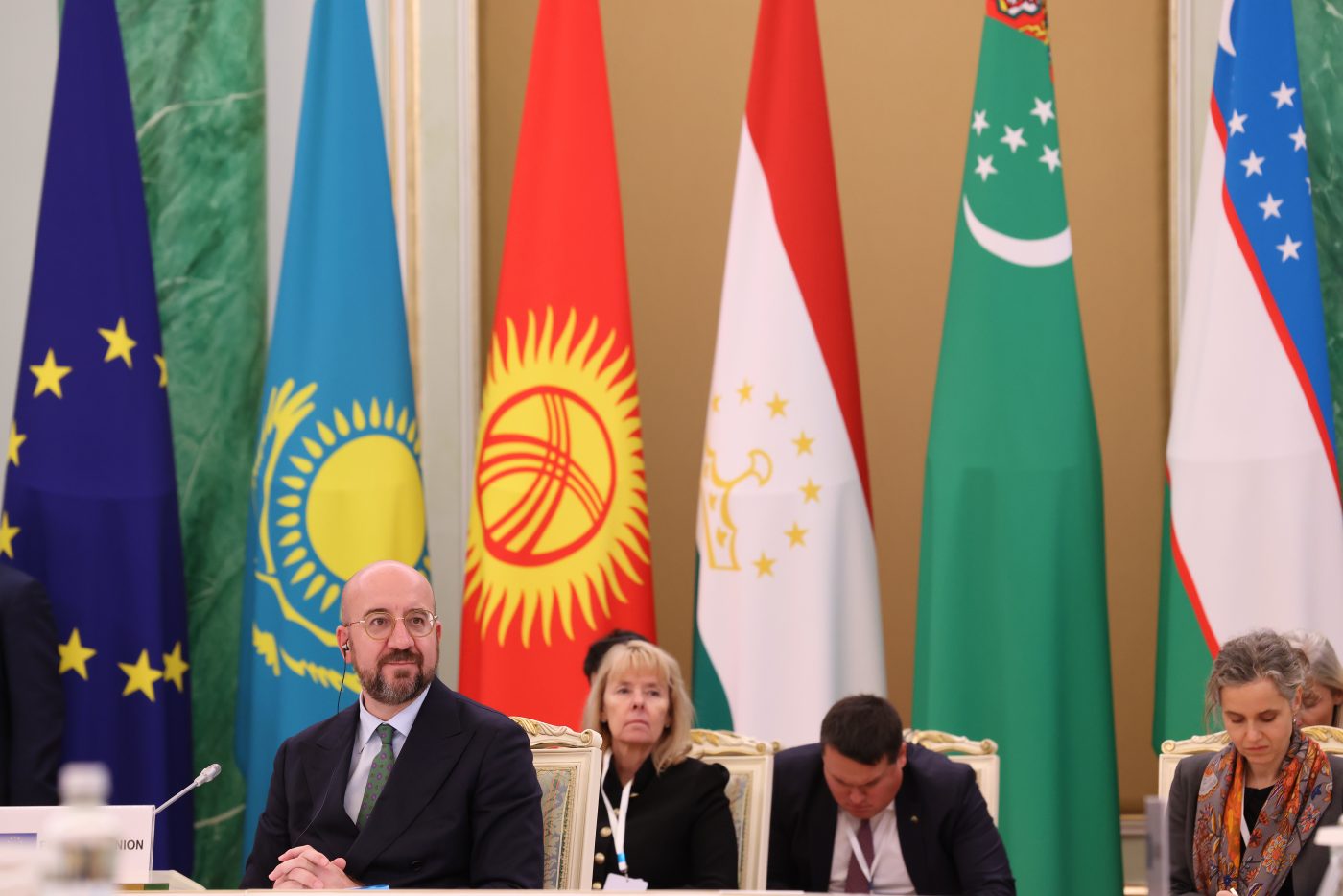2022 will go down in history as a watershed moment in EU-Russia relations. The invasion of Ukraine was a primary cause, but it may well be that future historians will agree that the breakdown of bilateral ties was long in the making. With Russia intent on rebuilding its territorial empire through brutal, old-fashioned hard power, and the EU offering to spread its soft power influence of governance norms and economic development, the clash of the two geopolitical orders was inevitable.
While Ukraine and the South Caucasus have been the primary focus of this struggle, Central Asia was mostly absent. Geography limited the West’s projection of power. So did Russia’s centuries-old influence and to a growing degree China’s ambitions. More importantly, the EU and to some degree, the US regarded their engagement in Central Asia exclusively through the prism of maintaining good relations with Russia. Success in the region was deemed possible only with the Kremlin’s acquiescence.
But Russia’s disastrous war in Ukraine unraveled this status quo. The Kremlin is no longer seen as a partner or even competitor in the EU, but firmly as a geopolitical rival. Increasingly the West and the EU in particular see the need to reach out to Central Asia by circumventing Russia. The shortest corridor lies through the South Caucasus and the EU has laid the groundwork by expanding EU institutions into the wider Black Sea region, to Georgia by recognizing the latter’s European ambitions, by signing a massive gas agreement with Azerbaijan, and assuming a central role in Armenia-Azerbaijan peace negotiations. It is now looking further eastward.
The European Council chief Charles Michel was in Astana to meet regional leaders in late October, a meeting he called “much more than just a policy dialogue between two regions.” The EU’s chief diplomat, Joseph Borrell, visited the region again in late November, emphasizing the bloc’s interest.
The summitry between the EU and the heads of Central Asian states signals a shift toward greater competition with Russia and China. These two Eurasian powers have traditionally held their own summits with Central Asian states and applied the concept of regionalism whereby the presence of outside countries (which primarily means the West) is deemed harmful and threatening.
Yet the EU’s engagement has the potential to flower into a major development. The EU has cash. It wants to engage the region through the EU’s massive €300bn ($315bn) Global Gateway infrastructure framework, which is the bloc’s response to China’s Belt and Road Initiative.
The EU is basing its future success on its already extensive economic presence. The EU chief diplomat argued that the bloc is the biggest investor in Central Asia with more than 40% of foreign investment coming from EU firms.
But perhaps the biggest advantage the EU currently has is the growing resentment among Central Asian nations against Russia and its openly imperial behavior. Russia’s invasion has rekindled reminders of the wounds left by almost two centuries of harsh imperial domination by the Kremlin. Given that Central Asian states cannot escape their geography, the only reliable foreign policy option for Central Asian states is to spread their risk. “The EU has a lot to offer to help you diversify your foreign policy options” and “support own regional integration efforts,” Borrell argued.
Balancing Russia with China is one tool, but Central Asian states do not want to become a part of the Chinese-Russian condominium either. The EU’s growing engagement is thus timely and highly welcome among the five states of the region.
The EU’s activism also fits into its long-anticipated ambition of building a truly European geopolitical power, one able to compete with other big Eurasian centers. This signals a shift in the bloc’s thinking from seeing Central Asia through the prism of its European Neighborhood Policy to a more geopolitical, and therefore pragmatic approach.
More concretely, the EU has revised its Central Asia strategy. It now uses both a tailored approach, but also, when necessary, applies a regional vision. The EU has introduced Enhanced Partnership and Cooperation Agreements (EPCA); for example, it has an EPCA with Kazakhstan, and a Temporary Trade Agreement with Turkmenistan. Following the Russian invasion, it also signed an EMCA with Uzbekistan and aims to reach similar deals with Kyrgyzstan and Tajikistan. This would allow the group more flexibility in power projection schemes and effectively blunt Russian and Chinese efforts at blocking external, non-regional influence in Central Asia.
The EU’s pragmatism also involves making money and opening sources of natural resources for industry, as well as diversifying energy providers now that Russian supplies have proved unreliable. Azerbaijan is surely important, but Turkmenistan, one of the richest in terms of gas deposits, is even more critical. This means that active EU involvement could re-open talks on the long-stalled trans-Caspian gas pipeline. This takes place amid EU officials’ visits to Georgia and Azerbaijan, and efforts to facilitate the expansion of the Middle Corridor, the best geographical alternative to a route through Russia.
The momentum behind the EU’s engagement with Central Asia is also driven by the relative absence of the US. While it is easy to think that US and EU interests are identical, that is not always the case.
It is true that when dealing with the Middle Corridor and engagement with Central Asia, the US is squarely behind EU policy. Nevertheless, a much more active US involvement would be welcome. The EU has money, and Central Asian states need that, but without active US diplomatic support and perhaps even some kind of security engagement, reaching a positive outcome will be a difficult task.
Emil Avdaliani is a professor at European University and the Director of Middle East Studies at the Georgian think-tank, Geocase.
Europe’s Edge is CEPA’s online journal covering critical topics on the foreign policy docket across Europe and North America. All opinions are those of the author and do not necessarily represent the position or views of the institutions they represent or the Center for European Policy Analysis.





